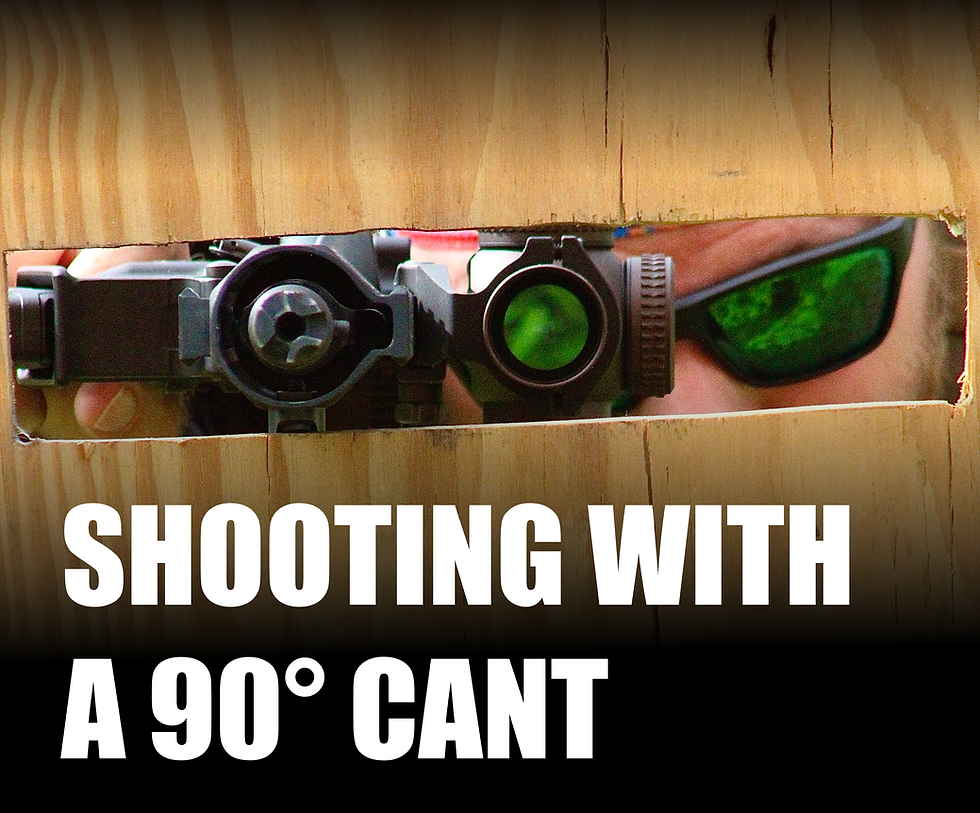
Precision shooters know that rifle cant will introduce variation in impacts downrange. But what if you are forced into using cant with your scoped rifle? We studied the effects of 90° cant and present the data here!
Cant: Angled rotation of the optic from directly over the bore centerline.
Any deviation of the optic from directly above the bore will cause bullet impacts to shift from your rifle's normal zero. This change in impact location may not be noticeable if the angle is only a few degrees and the target is close, but as the angle increases or the target gets further away, cant will certainly change the bullet's desired impact.

90° cant is used when shooting through narrow, horizontal openings where the target is occluded unless the optic is rotated 90° to the left or right. Real life examples of these openings might include under cars or through stairs, and competition shooters might see these openings represented as VTAC barricades or railroad ties.
Right-handed shooters typically rotate the rifle so the optic is to the left and the magazine points right. Left-handed shooters usually rotate the rifle so the optic is right and the magazine points to the left.
We studied new impact locations at closer distances when two different optic set-ups are fired with a 90° cant. We fired the rifles from support as shown.

We tested with two rifles - the first was a 16" AR15 with a 1.54" optic height and a 100 yard zero. The second was a 14.5" AR15 with a 1.93" optic height and a 50 yard zero. Here are the results of the two different rifles and optic heights when fired with 90° cant.


While this study is not comprehensive and we do not conclude whether the zero distance or mount height (or both) causes the impact shifts, we can see that there are some general trends. Within 50 yards, there is little difference in impact from zero, although there are distinct groups. At 100 yards for both weapons, the shots begin to move low toward the optic side of the rifle. Our test at 200 yards was too inaccurate to add to paper, but the trend of impacts low to optic side continued to magnify.
Summary:
Within 50 yards, minor differences in shot placement exist.
Shots greater than 50 yards will require a major adjustment to aim point
Shooters should aim high, toward the magazine side of the rifle for greater distances.
Using a clock example, aim at 1:30 if mag faces right or 10:30 if mag faces left
If shooting steel, aim at the top right corner if mag faces right or top left corner if mag faces left

Comentarios